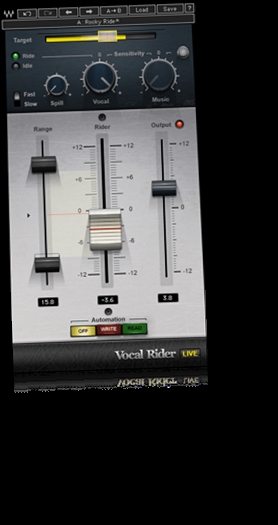

If you're upgrading to version 2, you will need to manually delete files, but the instructions are very clear. Installation & Setupīoth plug‑ins use iLok assets to authorise them, although it is also possible to authorise Wave Rider to a particular hard drive.

More recently still, Quiet Arts have released version 2 of Wave Rider, so we thought this was an appropriate time to test out these two plug‑ins alongside each other. All you need to do is set the target range of the vocal level in relation to the rest of the mix, after which Vocal Rider compensates for all deviations from the target, intelligently raising or lowering the vocal volume instantly. Vocal Rider is, as the name suggests, specifically designed to ride the levels of vocal tracks automatically. Reviewed by Paul White in the January 2010 issue of SOS ( /sos/jan10/articles/vocalrider.htm), it works along similar lines, but it does not need to write automation to your Pro Tools session in order to adjust levels - and when it is set to generate automation, it automates the level of its own internal fader rather than the Pro Tools channel fader. The third main function allows faders to be 'parked' at a user‑defined, low level when there's little signal, and have them jump up to full output when there's strong signal present, maintaining a steady output level.īack in May 2009, Wave Rider was the only plug‑in of its kind on the market, but in November of that year, Waves announced a plug‑in called Vocal Rider. Its Ride algorithm automatically raises or lowers the fader level to maintain a user‑selectable output level by writing volume automation on the timeline, while the Duck function will lower the level of a second, target track by a user‑selectable amount if there's signal present on the inserted track. This allows it to perform several functions automatically that would otherwise require a human hand on the fader. Company founder Vedat Kiyici describes it as a unique RTAS plug‑in that detects audio signal level on the inserted channel, and uses that information to control fader movements. So back in May 2009, when I heard about Wave Rider, from a small company based in New Zealand called Quiet Arts Ltd, I followed the progress of this plug‑in with interest - as readers to my Pro Tools blog ( will know. Regular readers may remember that I have a habit of championing small plug‑in developers, especially when they develop a unique product. Fine‑tuning level automation on key parts can make a huge difference to your mix, but it's a tedious process - unless a plug‑in does it for you!


 0 kommentar(er)
0 kommentar(er)
